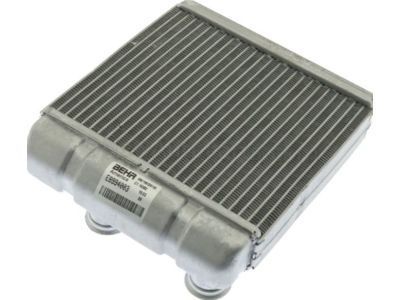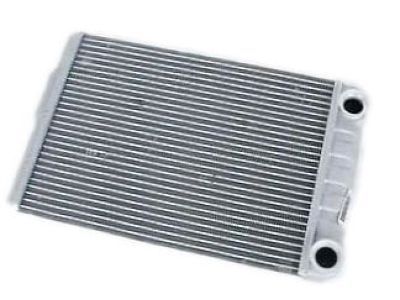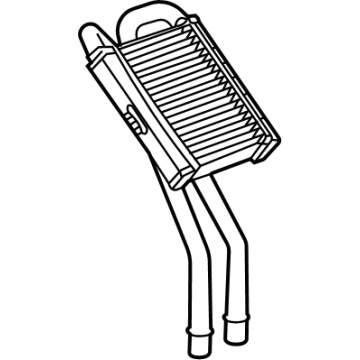My Garage
My Account
Cart
Genuine Chevrolet Traverse Heater Core
HVAC Heater Core- Select Vehicle by Model
- Select Vehicle by VIN
Select Vehicle by Model
orMake
Model
Year
Select Vehicle by VIN
For the most accurate results, select vehicle by your VIN (Vehicle Identification Number).
6 Heater Cores found
Chevrolet Traverse Core Kit, Htr
Part Number: 84406079$79.20 MSRP: $166.38You Save: $87.18 (53%)Ships in 1-2 Business DaysChevrolet Traverse Core Assembly, Heater
Part Number: 22961456$129.48 MSRP: $272.02You Save: $142.54 (53%)Ships in 1-2 Business DaysChevrolet Traverse Core Kit, Htr
Part Number: 84760093$79.59 MSRP: $167.21You Save: $87.62 (53%)Ships in 1-3 Business DaysChevrolet Traverse Core Assembly, Aux Htr
Part Number: 84689022$45.34 MSRP: $81.32You Save: $35.98 (45%)Ships in 1-3 Business DaysChevrolet Traverse CORE KIT-HTR
Part Number: 26526766$77.64 MSRP: $139.26You Save: $61.62 (45%)Ships in 1-2 Business DaysChevrolet Traverse HEATER ASM,AIR
Part Number: 13540788$80.89 MSRP: $145.10You Save: $64.21 (45%)Ships in 1-2 Business Days
Chevrolet Traverse Heater Core
Heater Core is the component in Chevrolet Traverse automotive that has the function of warming the interior of a car with the help of overheating an engine. Looking somewhat like a miniature radiator, the core is cooled by a water and antifreeze solution and the hot coolant from the engine is circulated through it to heat the vehicle's interior. In some cases, doors or valves that allow temperature control may be installed in the different types of heater cores; while more sophisticated have electromechanical actuators providing accurate control on the same. In conditioned vehicles, the heater core also helps in dehumidification in addition to reheating of cooled air. Some of the common problems include blockage, dripping, and rusting and may involve dismantling of the dashboard to an extent.
Each OEM Chevrolet Traverse Heater Core we offer is competitively priced and comes with the assurance of the manufacturer's warranty for the part. Furthermore, we guarantee the speedy delivery of your orders right to your doorstep. Our hassle-free return policy is also in place for your peace of mind.
Chevrolet Traverse Heater Core Parts Questions & Experts Answers
- Q: How to remove the front and rear heater cores on Chevrolet Traverse?A: To remove the front heater core, start by disconnecting the cable from the negative battery terminal and draining the cooling system. Remove the driver's seat and the driver's side floor console extension panel. Then, remove the floor outlet duct and the heater core cover. Disconnect the heater core tubes and carefully pull out the heater core from the heater case. For installation, follow the reverse steps and refill the cooling system with the proper antifreeze concentration. Start the engine and check for any leaks. To remove the rear auxiliary heater core, first have the air conditioning system recovered. Loosen the right-rear wheel lug nuts and raise the rear of the vehicle on jackstands. Remove the right rear wheel and inner fender splash shield. From below the vehicle, disconnect the heater hoses and refrigerant lines from the rear auxiliary HVAC module fittings. Remove the HVAC module mounting nut. Inside the vehicle, remove the rear storage compartment, third-row seat, and passenger's side rear quarter trim panel. Disconnect the electrical connector for the rear auxiliary HVAC unit. Remove the air conditioning air outlet duct and the heater air outlet duct. Remove the module mounting bolts and remove the module from the vehicle. Place the module on a flat surface and remove the rear auxiliary evaporator tube clips. Remove the HVAC module lower cover bolts and the cover. From the front of the module, remove the HVAC module case screws and separate the case halves to access the heater core. Carefully pull out the heater core from the HVAC case. For installation, follow the reverse steps and refill the cooling system. Finally, have the system evacuated, recharged, and leak tested.







